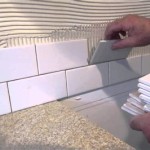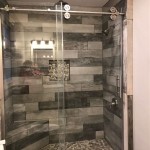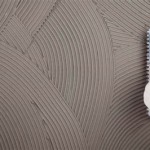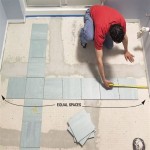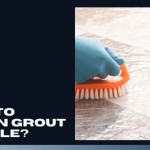Beautiful Bathroom Tiling: Tub Surround Tile Patterns That Elevate Your Space
The bathroom, once a purely functional space, has evolved into a personal sanctuary. A critical element in creating this oasis is the tub surround, which serves as both a protective barrier against water damage and a visual centerpiece. The choice of tile and its arrangement significantly impact the overall aesthetic and perceived value of the bathroom. This article delves into various tub surround tile patterns, highlighting their design characteristics and suitability for different bathroom styles.
Tile selection involves careful consideration of material, size, color, and texture. Popular choices include ceramic, porcelain, glass, and natural stone, each offering unique benefits and drawbacks. Ceramic and porcelain are durable, water-resistant, and cost-effective, making them suitable for high-moisture environments. Glass tiles provide a sleek, modern look and reflect light, enhancing the feeling of spaciousness. Natural stone, such as marble or granite, exudes luxury and sophistication, although it requires more maintenance. The size and shape of the tiles influence the perceived scale of the bathroom. Larger tiles can make a small bathroom feel more expansive, while smaller tiles create a more intricate and detailed design.
Understanding the Impact of Tile Layout and Grout
Beyond the choice of tile itself, the layout dramatically alters the visual impact of the tub surround. The grout color further enhances the tile pattern. Contrasting grout lines emphasize the individual tiles and create a bolder statement, while matching grout lines create a more seamless and subtle appearance. The following patterns are some of the standard options:
Straight Lay: This is perhaps the most straightforward and commonly used pattern. Tiles are aligned in rows and columns, creating a clean and symmetrical look. The simplicity of the straight lay pattern makes it versatile enough to complement various bathroom styles, from traditional to contemporary. It is also relatively easy to install, making it a cost-effective option. This pattern is often referred to as the stack bond or grid pattern.
Staggered or Brick Pattern: As the name suggests, the staggered pattern resembles a brick wall, with each row offset by half a tile width. This pattern adds visual interest and a subtle sense of movement to the tub surround. It's a popular choice for creating a more relaxed and informal aesthetic. The staggered pattern is suitable for both rectangular and subway tiles and works well with various tile sizes.
Herringbone: The herringbone pattern creates a distinctive and elegant look. Tiles are arranged in a zigzag pattern, resembling the bones of a herring fish. This pattern is visually striking and adds a touch of sophistication to the bathroom. It is best suited for rectangular tiles and requires more precise installation than simpler patterns, such as the straight lay.
Chevron: Similar to the herringbone, the chevron pattern also involves a zigzag arrangement. However, instead of the tiles meeting at a 90-degree angle, they are cut at an angle to create a continuous V-shape. This creates a more streamlined and modern look compared to the herringbone pattern. The chevron pattern requires precise cutting and installation to ensure a seamless and visually appealing result.
Diagonal: The diagonal pattern involves laying the tiles at a 45-degree angle to the walls. This creates a dynamic and visually interesting effect, making the bathroom feel wider and more spacious. It is suitable for both square and rectangular tiles. However, the diagonal pattern requires more cutting and can result in more tile waste compared to simpler patterns.
Mosaic: Mosaic tiles consist of small pieces of tile arranged on a mesh backing. They offer a wide range of design possibilities, from simple geometric patterns to intricate pictorial designs. Mosaic tiles can add a touch of artistry and personality to the tub surround. They are often used as accent bands or decorative borders to break up larger areas of solid tile.
Stacked Vertical: This pattern, like the straight lay, uses rectangular tiles laid in columns. However, by orienting the tiles vertically, it creates the impression of height. It works well in bathrooms with lower ceilings, making the room feel more expansive.
Color Palette Considerations
Color plays a crucial role in setting the mood and atmosphere of the bathroom. Light and neutral colors, such as white, beige, and gray, create a sense of spaciousness and tranquility. They also reflect light, making the bathroom feel brighter. Darker colors, such as navy blue, charcoal gray, and emerald green, can add drama and sophistication. However, they can also make a small bathroom feel smaller and more enclosed. Color schemes should coordinate with other elements in the bathroom, such as the vanity, fixtures, and accessories.
Monochromatic color schemes, using different shades of the same color, can create a harmonious and cohesive look. Complementary color schemes, using colors that are opposite each other on the color wheel, can create a vibrant and eye-catching effect. Analogous color schemes, using colors that are adjacent to each other on the color wheel, can create a soothing and balanced atmosphere.
Adding accent colors through tile borders or decorative elements can provide visual interest and prevent the tub surround from feeling monotonous. Metallic accents, such as gold, silver, or bronze, can add a touch of luxury and glamour. The inclusion of natural stone, especially with prominent veining, creates a visual effect beyond a single color choice.
Beyond the Basics: Creative Tiling Options
While standard patterns offer reliable and aesthetically pleasing results, exploring creative tiling options can further personalize the bathroom and elevate its design. These include:
Combining Different Tile Sizes: Mixing different tile sizes within the same pattern can add visual complexity and depth. For example, using large format tiles for the main area of the surround and smaller mosaic tiles for an accent border can create a dynamic and eye-catching effect.
Using Borders and Accents: Incorporating decorative borders or accent tiles can break up large areas of solid tile and add a touch of personality. Borders can be created using mosaic tiles, glass tiles, or even natural stone. Accent tiles can be strategically placed to highlight specific features or create focal points.
Creating a Feature Wall: Designating one wall of the tub surround as a feature wall and using a different tile pattern or color can create a dramatic and memorable effect. This is an excellent way to showcase a unique or luxurious tile selection.
Playing with Texture: Textured tiles can add depth and dimension to the tub surround, creating a more tactile and engaging experience. Textured tiles can mimic the look of natural stone, wood, or even fabric. They can also provide a non-slip surface, enhancing safety in the bathroom.
Utilizing Niche Designs: Incorporating recessed niches into the tub surround provides convenient storage for toiletries and adds a touch of architectural interest. Niches can be tiled to match the surrounding area or used as an opportunity to introduce a different tile pattern or color.
Large Format Slab Panels: In recent years, large format slab panels have become more common. These panels minimize grout lines, creating a seamless look. They often mimic the appearance of natural stone, such as marble or granite. While more expensive, they offer a sophisticated and luxurious finish.
Ultimately, the most beautiful bathroom tiling for a tub surround is subjective and depends on individual preferences, budget, and the overall style of the bathroom. Careful consideration of tile material, size, color, pattern, and grout color is crucial for achieving a cohesive and visually appealing result. Consulting with a professional tile installer can provide valuable insights and ensure proper installation.

Tile From The Freestanding Tub With Pendant Light Design Ideas

Bathroom Tiles Design Ideas From The House Garden Archive

50 Bathroom Curtain Ideas Stylish Functional Curtains

Bathroom Tiles Design Ideas From The House Garden Archive

Bathroom Tiles Design Ideas From The House Garden Archive

Bathroom Tiles Design Ideas From The House Garden Archive

Bathroom Tiles Design Ideas From The House Garden Archive

50 Bathroom Curtain Ideas Stylish Functional Curtains

Bathroom Tiles Design Ideas From The House Garden Archive

Interior Designer Jade Pairs Antique Vintage With Chic Matt For Her Bathroom Walls And Floors
Related Posts

